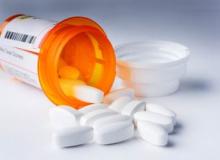
Background
These are molecules used to treat or prevent infectious diseases in humans and animals. Their mechanism of action is to kill microbes or at least stop them from growing. The term antibiotics are referring to naturally occurring molecules and the term antimicrobials encompass both naturally occurring and synthetically derived molecules.
The term bacteriostatic is used to describe antibiotics that stop bacteria from growing. The term bactericidal refers to the kind that kill bacteria. The human immune system is also important in curing infections, and stopping organisms from growing may be sufficient to allow the immune system time to cure the infection.
They can help patients live longer and feel better if used appropriately. However, the idea that they “can’t hurt” is incorrect. They can cause serious and life-threatening adverse reactions, such as anaphylaxis (serious allergic reactions) and liver toxicity. In fact, they are the second most common cause of anaphylaxis in the United States after food allergies. Less serious but more common adverse events include nausea, vomiting, diarrhea, and skin rash. They have no efficacy against viral infections, such as the common cold or flu. Therefore, prescribing these for a viral infection is not warranted. In addition, prescribing them for conditions when they are not needed contributes to antimicrobial resistance, thereby increasing the risk that these drugs will not be effective when they are needed. Resistance can affect not only the person who takes the drug but others to whom resistant bacteria may spread.
Gram Classification of Bacterial Cells
Bacterial cells are often grouped into categories on the basis of characteristics of their cell wall structure. The terms Gram-positive and Gram-negative reflect the staining technique used to distinguish these differences. The differences in staining are due to differences in the structures of the outer surfaces of bacteria.
Mechanisms of Bacteriostatic or Bactericidal Action
Many mechanisms exist by which they exert their effect on bacterial cells. These differ depending on the characteristics of the bacterial organisms. Some act by inhibiting the synthesis of the cell wall constituents, and so disrupt substrates or enzymes involved in the assembly or cross-linking of the cell wall. Others block the synthesis of proteins essential for the functioning of bacterial cells. Another mechanism of action is the blockade of DNA synthesis or repair.
Table 1. Examples of Common Antibiotics and Their Mechanism of Action Mechanisms of Action Antibiotics
| Inhibitors of cell wall biosynthesis | Penicillins, cephalosporins, vancomycin, bacitracin |
| Inhibitors of protein synthesis | Tetracyclines, macrolides, aminoglycosides, lincosamides,
streptogramins, oxazolidinones |
| Inhibition of DNA replication/repair | Ciprofloxacin, rifampin, fluoroquinolones |
Classes
1) B-Lactams
The beta-lactams include penicillins, cephalosporins, cephamycins, carbacephems, carbapenems, monobactams.
The mode of action (MOA) of all beta-lactams is to bind to and inactivate enzymes required for bacterial wall synthesis.
Penicillins: Are used for disease due to Gram-positive organisms and some Gram-negative cocci. Penicillin is the drug of choice for syphilis and endocarditis caused by susceptible enterococci. These medications are inexpensive but can cause a life-threatening anaphylactic reaction in those who are allergic.
Penicillin G-like drugs: Are used to treat Disease due to Gram-positive organisms and some Gram-negative cocci
Ampicillin-like drugs: Are used to treat Disease due to enterococci and certain Gram-negative bacilli
Penicillinase-resistant penicillins: These drugs are resistant to the enzyme penicillinase. This enzyme, which destroys penicillin, is produced by some Staphylococcus aureus. Examples of these drugs are: Dicloxacillin, Nafcillin, Oxacillin
Antipseudomonal penicillins: Similar to ampicillin but also active against some strains of Enterobacter and Serratia and many strains of Pseudomonas aeruginosa. Examples of these drugs are: Piperacillin (and piperacillin/tazobactam), Ticarcillin (and ticarcillin/clavulanate)
Cephalosporins: Cephalosporins are bactericidal with both Gram-positive and Gram-negative activity. They are grouped by generation. They do not produce the anaphylactic reactions that can occur with penicillins, but some patients are allergic to both penicillins and cephalosporins. Later generations are usually more active against Gram-negative bacilli. Some third-generation cephalosporins have relatively poor activity against Gram-positive cocci. A fourth-generation cephalosporin, cefepime, is active against Gram-positive cocci and Gram-negative bacilli, including P. aeruginosa.
Table 2. Cephalosporins
| First generation | Cefadroxil, Cefazolin, Cephalexin, Cephradine |
| Second generation | Cefoclor, Cefotetan, Cefoxitin, Cefprozil, Cefuroxime |
| Third generation | Cefdinir, Cefditoren, Cefixime, Cefoperazone, Ceftazidime, Ceftibuten, Ceftizoxime, Ceftriaxonel |
| Fourth generation | Cefepime |
Other beta-lactams
Monobactam: Aztreonam
May have less potential to cause allergic reactions in people allergic to other penicillin-like drugs
Carbapenems: Imipenem, Meropenem, Doripenem
Patients who have a rash but not immediate hypersensitivity to penicillin may be less likely to have allergic reactions.
2) Glycopeptides
Examples of glycopeptides include Vancomycin, and Teicoplanin (not approved for use in the U.S.).
MOA: Glycopeptides form complexes with bacterial cell wall peptides.
Indications: Glycopeptides are used for patients with penicillin allergy or when bacteria that cause serious infections, such as methicillin-resistant Staphylococcus aureus (MRSA), are resistant to first-line drugs.
Risk-benefit: These drugs may cause skin redness (“red man syndrome”) when quickly administered intravenously. In such cases, the drug can still be given at a slower rate. Less common adverse events include decreased platelet count.
3) Aminoglycosides
Aminoglycosides include Gentamicin, Amikacin, Netilmicin, Streptomycin, and Tobramycin.
MOA: Aminoglycosides act at the outer bacterial membrane, creating fissures that allow enhanced antibiotic uptake and leakage of intracellular contents.
Indications: They are effective against Gram-negative bacteria and certain Gram-positive organisms. These drugs can also be used for prophylaxis (proactively giving the drug to prevent the potential of an infection), especially against endocarditis. Aminoglycosides are commonly used to treat abdominal and urinary tract infections and some agents are used as inhaled drugs to treat respiratory tract infections in patients with cystic fibrosis.
4) Quinolones
Quinolones include Ciprofloxacin, Levofloxin, Norfloxacin, Ofloxacin, and Gemifloxacin,
MOA: The quinolone class acts by inhibiting topoisomerases, enzymes necessary for bacterial DNA replication.
Indications: Quinolones are indicated for community-acquired pneumonia, skin infections, prostatitis, and urinary tract infections. Of note, Ciprofloxacin is used for post-exposure prophylaxis of inhalation anthrax.
5) Sulfonamides
Antibacterial sulfonamides were commonly called sulfa drugs. Sulfamethoxazole, the most common sulfonamide, is used in combinations, including Erythromycin-Sulfisoxazole and Cotrimoxazole (Trimethoprim-Sulfamethoxazole).
MOA: Antibacterial sulfonamides interfere with the production of folate through inhibition of enzyme production. They are bacteriostatic and stop bacterial growth, but they depend on the immune system to kill remaining organisms.
Indications: Sulfonamides are used to treat enterocolitis, traveler’s diarrhea, and bacterial urinary tract infections.
6) Macrolides
The macrolides include the oral agents Azithromycin, Erythromycin, and Clarithromycin, the
Tetracyclines (Tetracycline, Doxycycline, Tigecycline), the Lincosamides (Clindamycin), and the Streptogramins (Dalfopristin-Quinupristin)
MOA: The macrolides bind to the ribosomes of susceptible microorganisms, resulting in inhibition of protein synthesis.
Indications: Macrolides are used to treat pharyngitis, tonsillitis, community-acquired pneumonia, skin infections, and disseminated mycobacterial infections.
Resistance
Some microorganisms may develop resistance to a single antimicrobial agent (or related class of agent), while others develop resistance to several antimicrobial agents or classes. These organisms are often referred to as multidrug-resistant or MDR strains. In some cases, the microorganisms have become so resistant that no available antibiotics are effective against them.
Bacteria become resistant mostly by the misuse of them. For example, if a person is prescribed to take a certain one, say penicillin, for 2 weeks, many people would cease taking the penicillin after their symptoms disappeared, and would instead stockpile it, hoping to save it for later, when it may need to be used again. Contrary to common belief, they do not destroy all bacteria at once, and do not destroy bacteria randomly. The bacteria eliminated first are those which are most susceptible to the antibiotic, leaving those which are more resistant, and which carry resistant genes. The more resistant bacteria are better able to survive and thrive, transmitting their genetic material, and thus their resistant genes, to next generations of bacteria, due to the lack of competition for resources after the elimination of the susceptible bacteria (natural selection).
Additionally, genetic material which provides for bacterial resistance may also be transmitted between different species of bacteria through a process known as conjugation, where bacteria form plasmids, basically capsules of genetic material, which are transferred from one bacterium to another. This can happen through our food supply. Due to the conditions that animals are kept in, they are routinely given antibiotics to ward off disease. These get passed on to us when we eat the animals but at a lower level. Pathogens in our body that would normally be susceptible to these antibiotics become immune to them because they can tolerate the low levels in our bodies.
Lastly, because bacteria can multiply at such fast rate, they can mutate at a fast rate as well.
Occasionally these mutations make them more resistant to them and so we need stronger and stronger drugs to be able to fight them.
Significance of Antimicrobial Resistance
Resistant organisms are a major threat to public health worldwide. There is some evidence that these pathogens are more virulent (causes a more severe disease). Patients may die from infections caused by these organisms due to the lack effective therapy.
Prevention of Transmission
Standard precautions are instituted at healthcare facilities as the foundation for protecting patients and healthcare personnel from infectious agents. However compliance with these precautions continues to be suboptimal. Additional precautions are instituted for specific resistant organisms such as MRSA, VRE, and CRE, in order to prevent patient-to-patient transmission. These precautions include hand hygiene, wearing gloves and gown, and placing patients in private rooms. Timely identification of patients infected with resistant organisms is the most important step in implementing these precautions and to adequately treat the infection.
The relationship between Antibiotics and Disinfectants
Disinfectants are different from other antimicrobial agents which destroy microorganisms within the body, and antiseptics, which destroy microorganisms on living tissue. Disinfectants are also different from biocides — the latter are intended to destroy all forms of life, not just microorganisms. Disinfectants work by destroying the cell wall of microbes or interfering with the metabolism. Therefore, resistance does not mean resistance to disinfectants.

